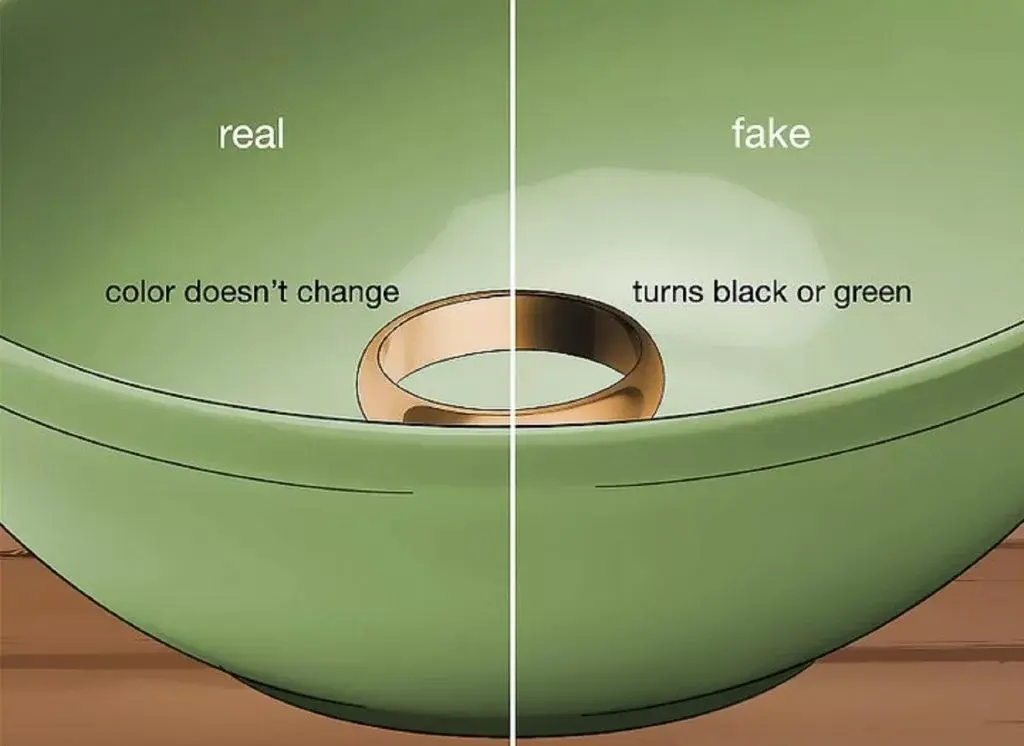How to Test Gold at Home: Easy Methods for Authenticity
Gold has been a valuable precious metal for thousands of years, prized for its beauty, rarity, and resistance to corrosion. Whether you’ve inherited jewelry, stumbled upon a potential treasure, or are considering purchasing gold items, knowing how to test gold at home can be incredibly useful. This guide will walk you through various methods to determine if your gold is genuine and assess its purity.
Why Learn How to Test Gold at Home?
Before diving into the testing methods, it’s essential to understand why learning how to test gold at home is valuable:
- Avoid scams and fraudulent sellers
- Verify the authenticity of inherited or gifted gold items
- Ensure you’re getting fair value when buying or selling gold
- Satisfy your curiosity about items you own or discover
Now, let’s explore the different techniques you can use to test gold in the comfort of your own home.
Visual Inspection: The First Step in How to Test Gold at Home
1. Look for Hallmarks and Stamps
One of the easiest ways to start testing gold at home is by examining the item for hallmarks or stamps:
- Common gold purity stamps include 10K, 14K, 18K, and 24K
- Look for stamps like “GP” (gold plated), “GF” (gold filled), or “GEP” (gold electroplated), which indicate the item isn’t solid gold
- Some countries use different markings, such as “585” for 14K gold or “750” for 18K gold
2. Check for Discoloration
Genuine gold doesn’t tarnish or change color over time. When learning how to test gold at home, look for:
- Green or black spots, which may indicate the presence of other metals
- Reddish tints, suggesting the item might be copper or a copper alloy
3. Examine the Weight and Feel
Gold is a dense metal, so it should feel heavier than similarly sized items made of other materials:
- Compare the weight of your item to a known genuine gold piece of similar size
- Be wary of items that feel too light for their apparent gold content
Simple DIY Methods: How to Test Gold at Home Without Special Equipment
4. The Magnet Test
Gold is not magnetic, making this a quick and easy test to perform at home:
- Obtain a strong magnet (neodymium magnets work well)
- Hold the magnet close to the gold item
- If the item is strongly attracted to the magnet, it’s likely not gold or contains very little gold
Note: This test isn’t foolproof, as some non-magnetic metals can be used in gold alloys.
5. The Float Test
Gold is very dense, which affects how it behaves in water:
- Fill a glass with water
- Gently drop your gold item into the water
- Real gold will sink quickly to the bottom
- If the item floats or sinks slowly, it’s likely not pure gold
6. The Skin Test
This method takes advantage of gold’s resistance to oxidation:
- Hold the gold item against your skin for a few minutes
- If it leaves a black or green mark, it’s likely not pure gold
- Genuine gold shouldn’t cause any discoloration on your skin
7. The Ceramic Test
This test can help determine if an item is gold-plated:
- Find an unglazed ceramic tile or plate
- Drag the gold item across the surface, applying slight pressure
- If a black streak appears, the item is likely not gold
- A golden streak indicates the item may be genuine gold
Advanced Techniques: How to Test Gold at Home with Simple Tools
8. The Acid Test
One of the most reliable ways to test gold at home is using acid testing:
- Purchase a gold testing kit with various strengths of nitric acid
- Make a small scratch on the gold item using the provided testing stone
- Apply a drop of acid to the scratch, starting with the lowest karat test solution
- Observe the reaction:
- If the scratch dissolves or turns green, the gold is of lower purity or fake
- If there’s no reaction, move to the next higher karat test solution
- Continue until you find the correct karat or determine the item isn’t gold
Caution: Handle acids carefully and follow all safety instructions provided with the kit.
9. Electronic Gold Testers
For those serious about learning how to test gold at home, consider investing in an electronic gold tester:
- These devices use electrical conductivity to determine gold purity
- They’re non-destructive and provide quick results
- While more expensive than other methods, they offer high accuracy for frequent testing
10. The Density Test
This method requires a bit more equipment but can provide accurate results:
- You’ll need:
- A precise digital scale (accurate to at least 0.1 grams)
- A graduated cylinder or beaker
- Water
- Weigh the gold item and record its weight in grams
- Fill the graduated cylinder with a known volume of water
- Submerge the gold item and note the increase in water volume
- Calculate the density using the formula: Density = Weight / Volume
- Compare the result to known gold densities:
- 24K gold: 19.3 g/cm³
- 18K gold: 15.6 g/cm³
- 14K gold: 13.1 g/cm³
- 10K gold: 11.5 g/cm³
Tips for Accurate Results When Learning How to Test Gold at Home
To ensure the best results when testing gold at home, keep these tips in mind:
- Combine multiple testing methods for more reliable results
- Clean the gold item thoroughly before testing to remove dirt or oils
- Be gentle with your gold items to avoid damaging them during testing
- If in doubt, consult a professional jeweler or appraiser for verification
Common Misconceptions About How to Test Gold at Home
When researching how to test gold at home, you may encounter some myths and misconceptions:
- The “Bite Test”
- Contrary to popular belief, biting gold doesn’t reliably indicate authenticity
- This method can damage your teeth and the gold item
- All Yellow Metal is Gold
- Many alloys and metals can mimic the appearance of gold
- Visual inspection alone is not sufficient to determine authenticity
- Gold Always Feels Heavy
- While gold is dense, some fake gold items can be weighted to feel similar
- Weight alone doesn’t guarantee authenticity
- All Gold Jewelry is Pure Gold
- Most gold jewelry is made from gold alloys for durability
- Pure 24K gold is too soft for many jewelry applications
When to Seek Professional Help
While learning how to test gold at home can be valuable, there are times when professional assistance is necessary:
- For high-value items or large quantities of gold
- When dealing with antique or historically significant pieces
- If you’re unsure about your test results
- When buying or selling gold in significant amounts
Professional jewelers and appraisers have access to more advanced testing methods, including:
- X-ray fluorescence (XRF) analyzers
- Fire assay testing
- Spectrographic analysis
These methods can provide more accurate results, especially for complex or valuable items.
The Importance of Ethical Gold Testing and Sourcing
As you learn how to test gold at home, it’s crucial to consider the ethical implications of gold production and consumption:
- Be aware of the environmental impact of gold mining
- Look for jewelry made from recycled gold or sourced from responsible mining operations
- Consider the human rights issues associated with some gold mining practices
By being an informed consumer, you can make more ethical choices when purchasing gold items.
Conclusion
Testing gold at home can save you money and protect you from fraud. By using visual inspection and various DIY methods, you can assess gold’s authenticity and purity. While home tests are useful, consulting a professional jeweler for valuable items ensures accuracy. Gaining proficiency in gold testing enhances your understanding of the metal and aids in making informed decisions regarding buying, selling, or collecting gold.







